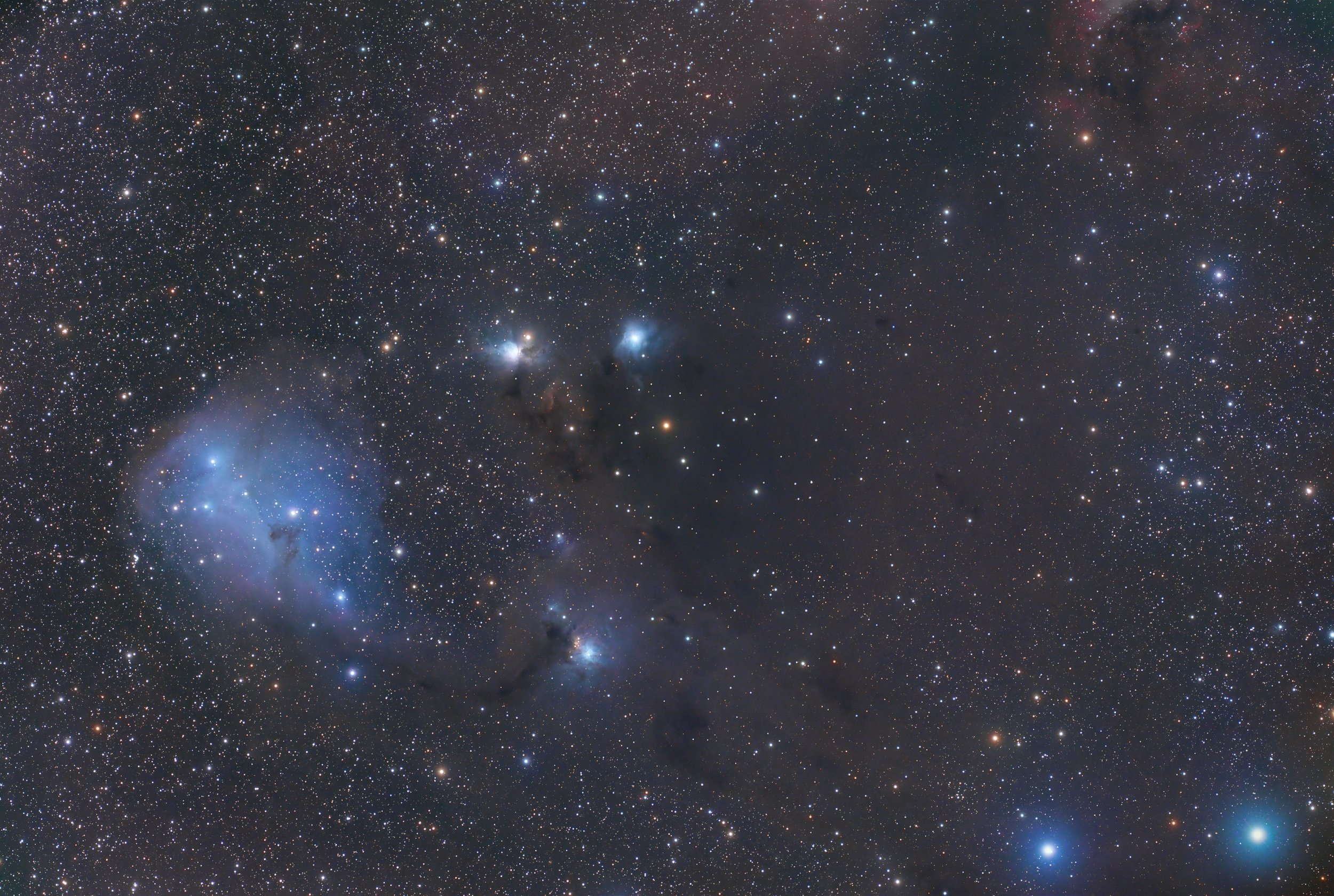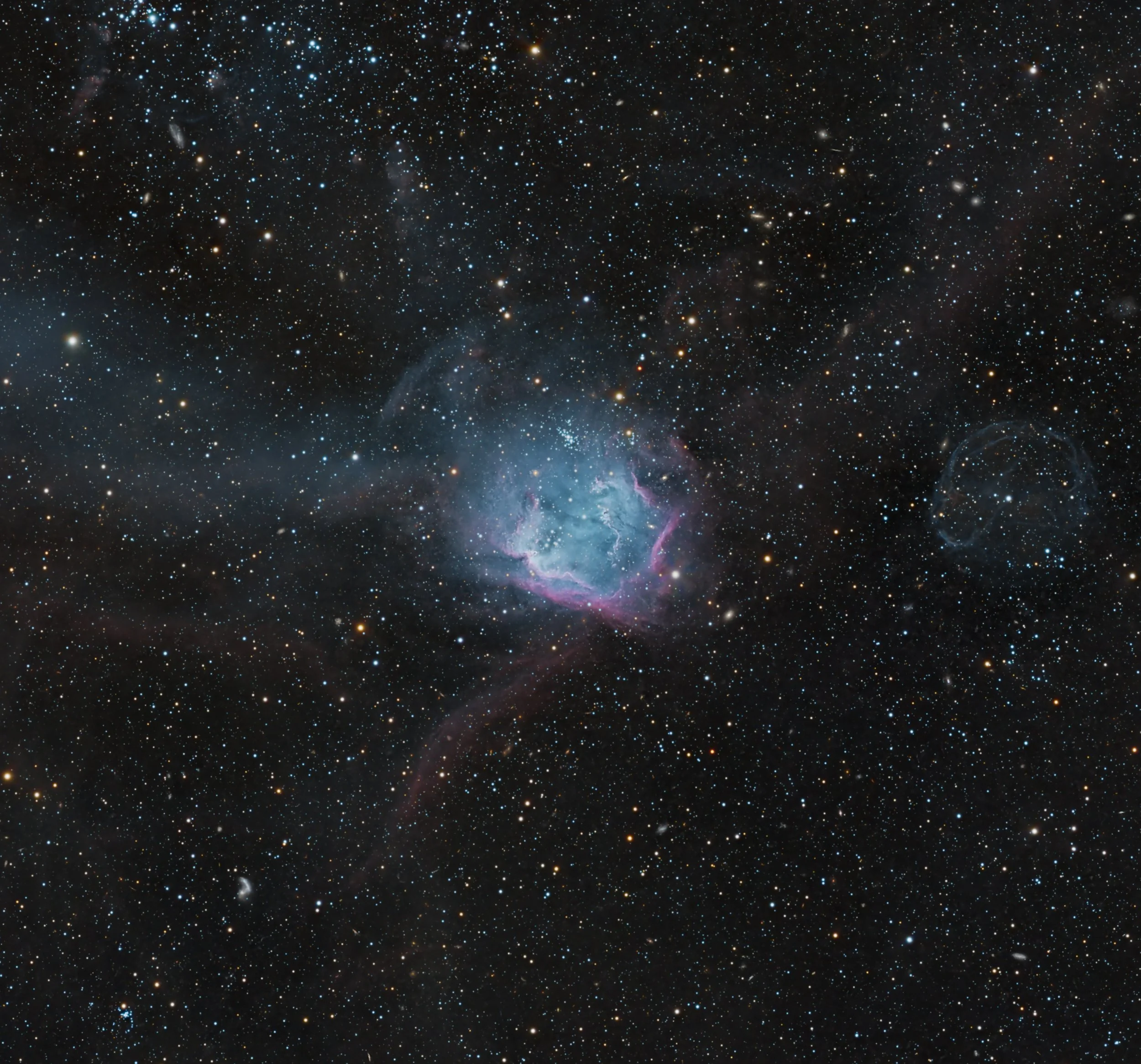
AAPOD2 Image Archives
Sort 2025 By Month: January | February | March | April | May | June | July | August | September | October | November | December
NGC 602
NGC 602 is a striking open cluster nestled within the Small Magellanic Cloud (SMC), a satellite galaxy of the Milky Way located some 200,000 light-years away. This vibrant cluster, surrounded by the emission nebula N90, is illuminated by young, massive stars that have recently formed within the dense clouds of gas and dust. The intense ultraviolet radiation from these hot stars sculpts and ionizes the surrounding material, creating a dynamic, glowing environment rich with cosmic activity.
There is what appears to be a faint planetary nebula, possibly identified as SMC-B Bru 2-165, nestled within this stellar nursery. Planetary nebulae represent the final stages in the life cycle of medium-sized stars, where the outer layers are ejected, leaving a hot, dense core.
The SMC itself offers a unique window into stellar evolution, given its low metallicity and proximity. Capturing such delicate and rare features in this image highlights the interplay of star formation, destruction, and the rich tapestry of phenomena present within this neighboring galaxy.
NGC 602 Flying Lizard Nebula and Neighbors
Image Description and Details :
NGC 602 or the Flying Lizard Nebula and its neighbors lie near the outskirts of the Small Magellanic Cloud (SMC) some 200,000 light-years away. 204 x 300s SHO subs shot @-10C spread across 5 nights for a total integration time of about 17hrs Equipment used:Skywatcher 10" f4 Newtonian 250PSkywatcher F4 Aplanatic Coma CorrectorSkywatcher NEQ6 Pro Hypertuned by Astronomy Academy PerthZWO ASI2600MM Pro Cooled CameraPrimaluce Sesto Senso2 Electronic FocuserWilliam Optics Uniguide 50/200mm guidescopeZWO ASI290MM Mini Guide CameraZWO Electronic Filter WheelAntlia Pro 36mm unmounted filtersRollon rolloff modified shed observatoryBortle 5Data acquisition software: NINA Astronomy SoftwareProcessing software: PixInsight and Photoshop CC
Copyright: Capturing Ancient Photons



